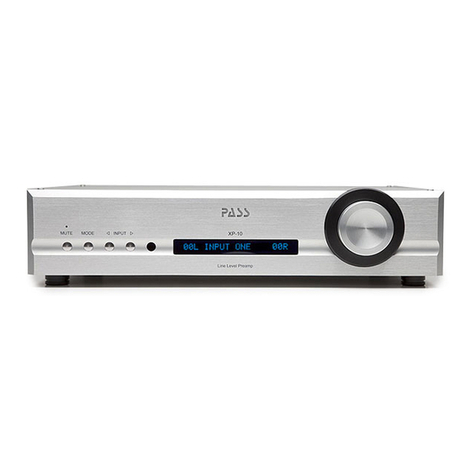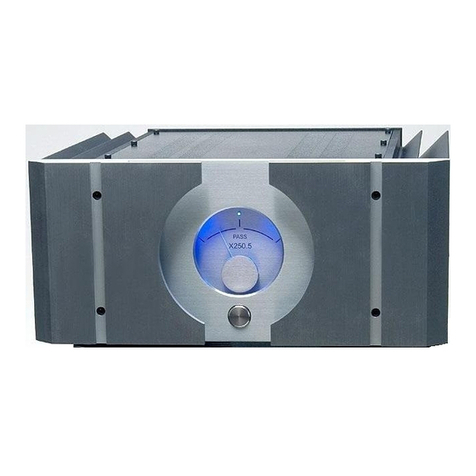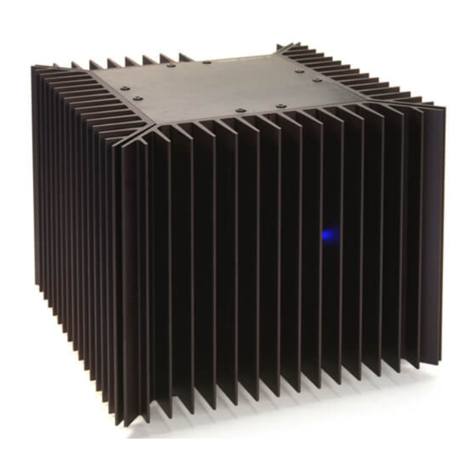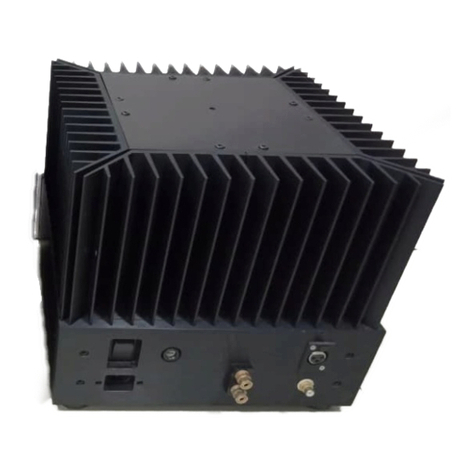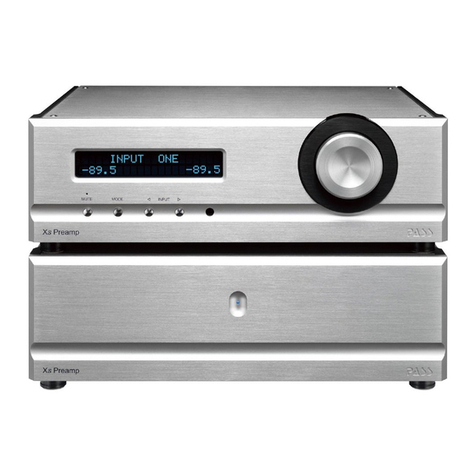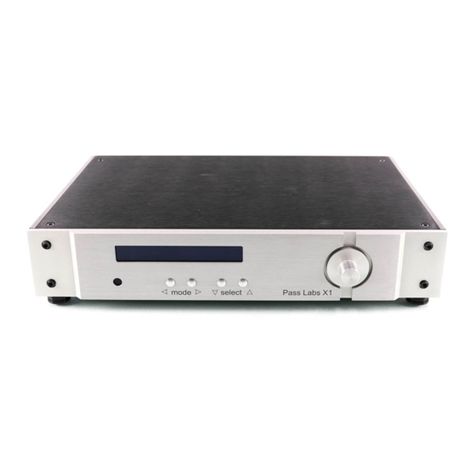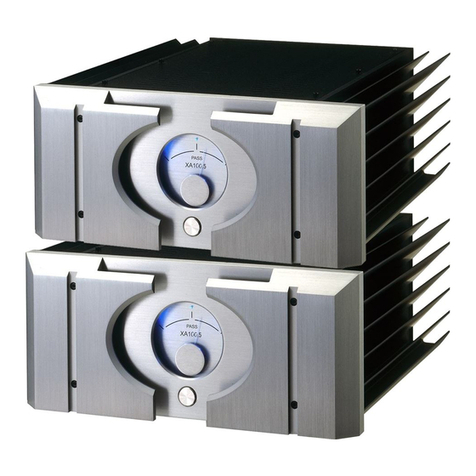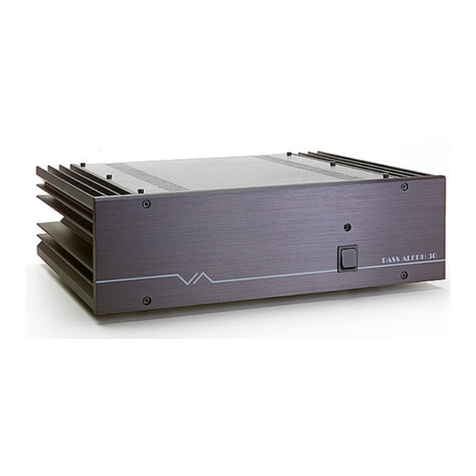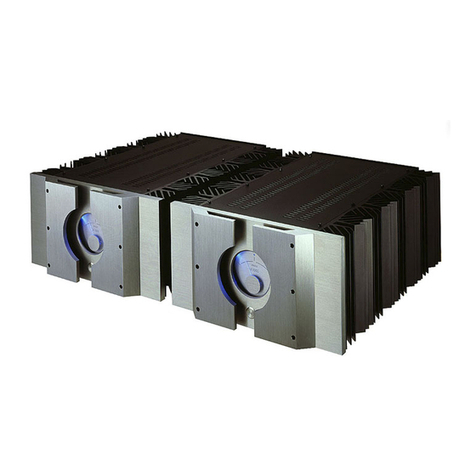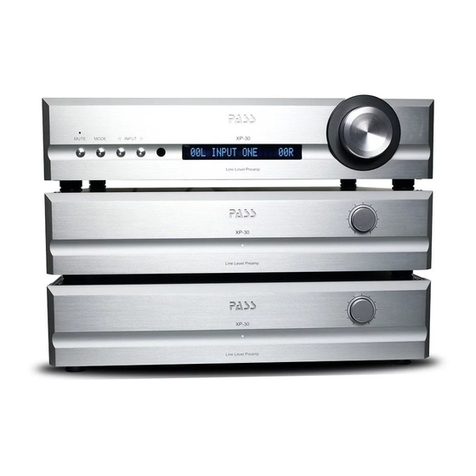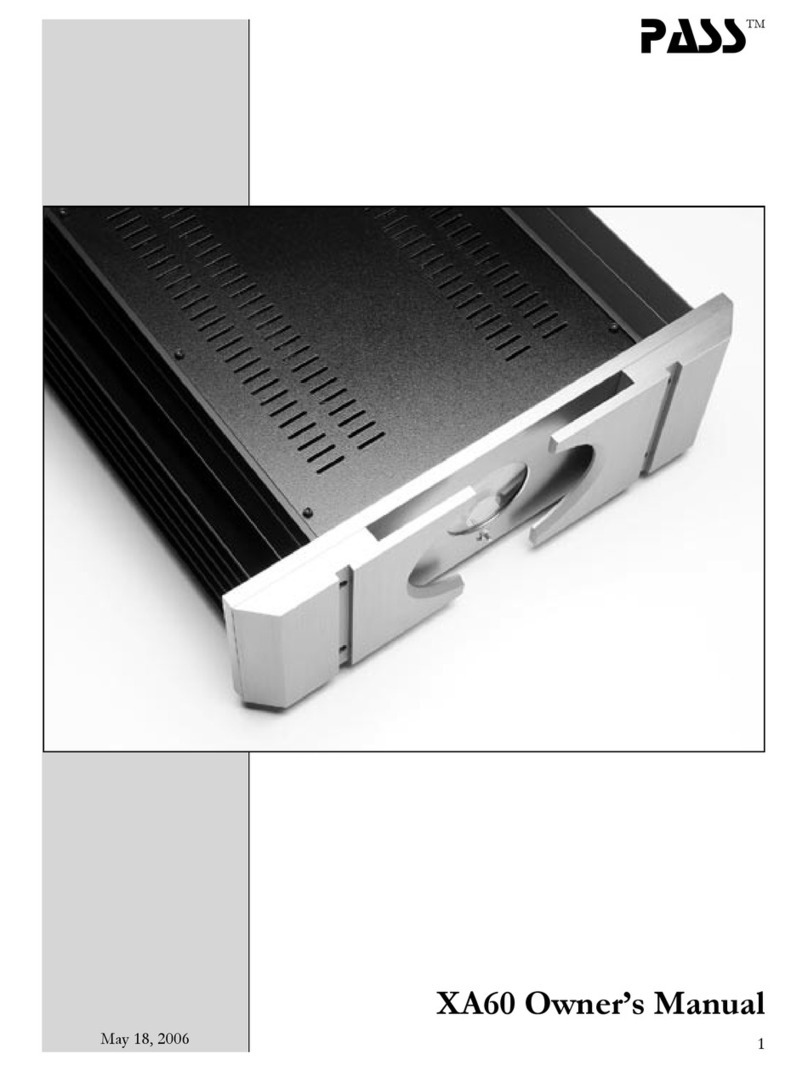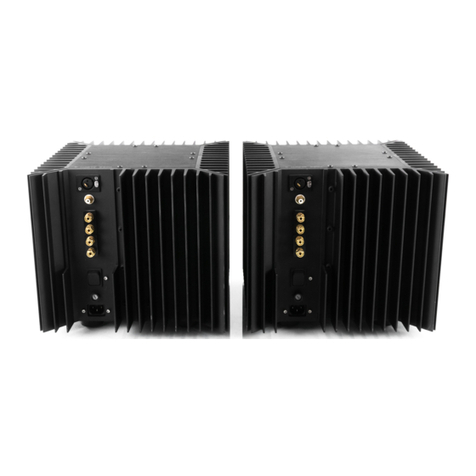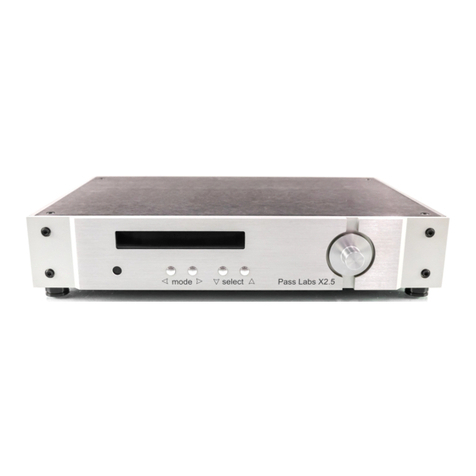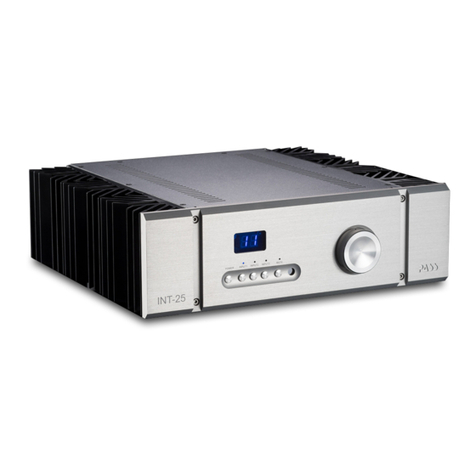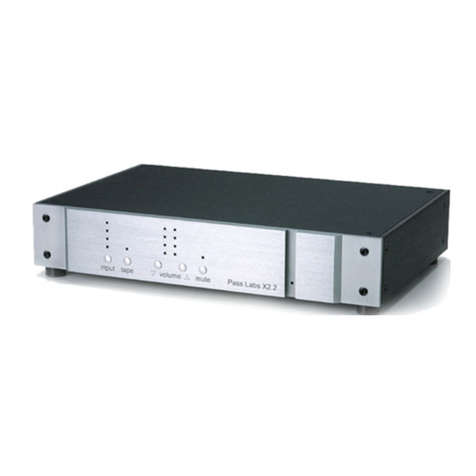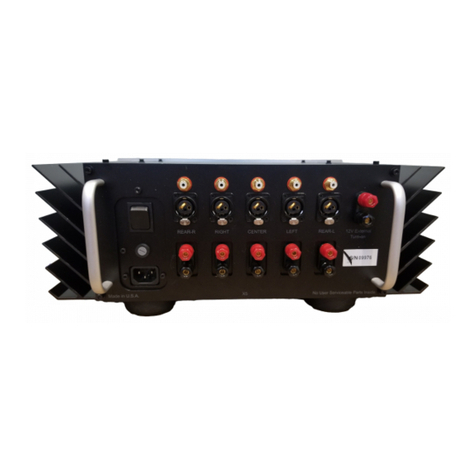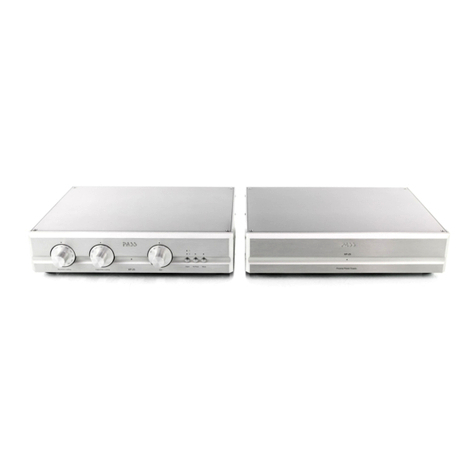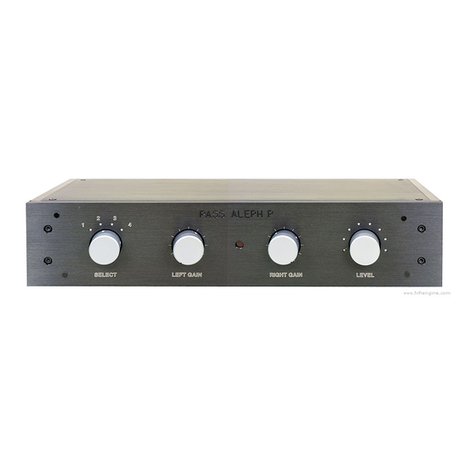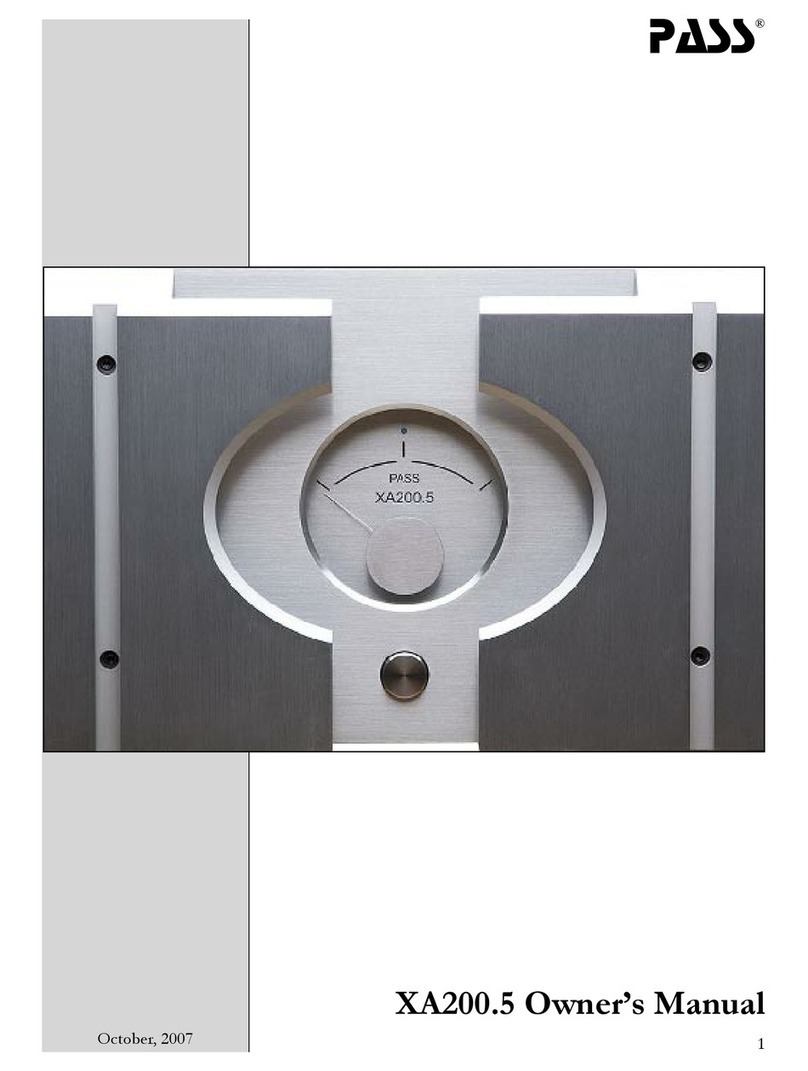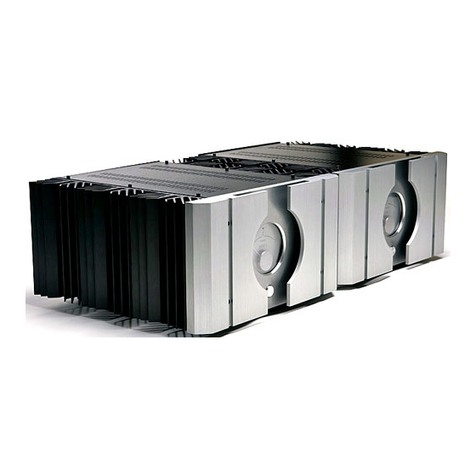
9
XP-22_om_prelim
Warranty Information
We go through great effort to make a soundly engineered, and
supurbly performing product of lasting duribility. But we also
understand that things infrequently go wrong, if you have any
questions or problems please contact either your dealer or the
factory, we are here to support the product and you, the user.
All Pass Laboratories products purchased new from an authorized
Pass Laboratories dealer in North America are covered by a
transferable, limited 3-year warranty. This warranty includes all parts
and labor charges incurred at the factory or factory specied
repair facility, exclusive of any subsequent or consequential
damages. Damage due to physical abuse is specically excluded
under this warranty.
For this warranty to apply the customer is responsible for returning
the product unmodied to the factory within the specied warranty
period. The customer assumes all responsibility for shipping and
insurance to and from the factory or a factory specied repair
facility. The conditions and stipulations of this Pass Laboratories
warranty only applies to units originally sold new through an
authorized dealer. Warranty on factory repair is 60 days and covers
only the scope of the original repair.
Non-North America customers should consult with their original
Pass Labs dealer or distributor for warranty repair instruction prior to
contacting the factory or shipping product to the factory for repair.
Non-North American product must be returned to the country of
origin for warranty service. Foreign distributors are only required to
offer warranty service on Pass Laboratories product that they have
imported, veriable by serial number.
Please note: Conditions of warranty service and customer rights for
product purchased outside the United States may vary depending
upon the distributor and local laws. Please check with your local
distributor for specic rights and details.
Any modications to Pass Laboratories products that have not
received written factory approval nullify all claims and void all
provisions of the warranty and liability by the maker or authorized
distributor. Should a modied product be returned to the factory
for repair the owner will be required to pay all necessary charges
for the repair in addition to those charges required to return the
product to it’s original conguration.
In the case of safety issues, no product shall be returned to the
customer without those safety issues being corrected to the most
recent accepted standards.
Removal or alteration of original Pass Labs serial numbers voids the
factory warranty. Product with altered or missing serial numbers will
be suspect as counterfeit or stolen product.
